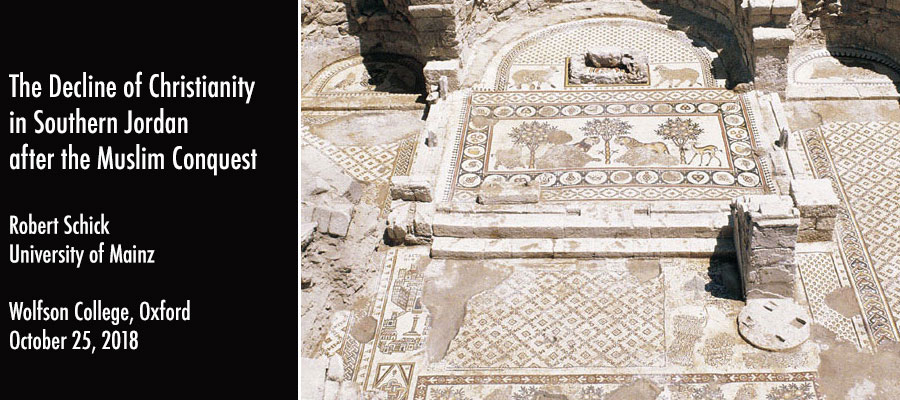The Decline of Christianity in Southern Jordan after the Muslim Conquest, lecture by Robert Schick (University of Mainz), Wolfson College, Oxford, October 25, 2018, 5:15 pm
In the 6th century AD the population of southern Jordan was solidly Christian, attested in historical sources and documented archaeologically by some fifty churches and hundreds of Christian tombstones from dozens of sites. But for how long did the Christians continue to thrive after the Muslim conquests of the 630s? Excavations of churches show little trace of any Christian presence beyond the 9th-10th centuries, and often demonstrate an end to the Christian use of church buildings even earlier, while Christians are scarcely attested in historical sources after the 8th century.
That end of evidence for Christians between the 10th and 12th centuries seems to genuinely reflect the sharp decline of the Christian population well before the Crusades. When the Crusaders appeared in the early 12th century, local Christians became visible again, but only in a few sites, and only until the Crusader presence came to an end, after which Christians again mostly disappeared from the historical and archaeological record, as they dwindled to the small remnant population known in modern times.
Robert Schick is a researcher specializing in the history and archaeology of Jordan in the Byzantine and Islamic periods. He has been active in archaeological excavations in Jordan since 1980 and has also worked in Jerusalem for many years. Since the fall of 2014 he is at the University of Mainz in Germany, studying the history and archaeology of early Christianity in southern Jordan.
